Nd:YAG Free-Space Isolators (1020 - 1100 nm)
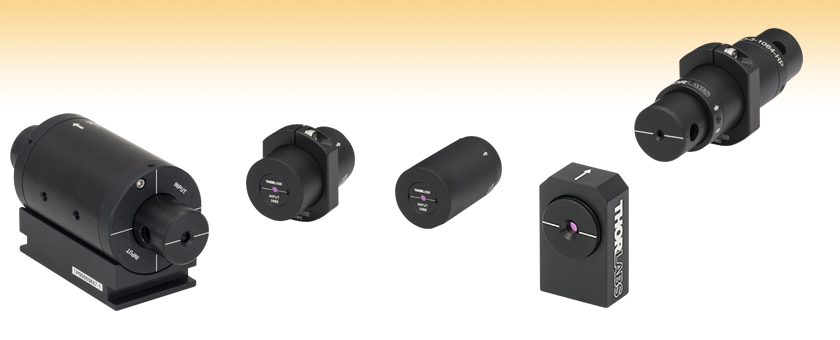
- Center Wavelength of 1064 nm
- Isolation up to 55 dB
- Power Densities up to 20 kW/cm²
- Custom Isolators Available Upon Request
IO-5-1064-HP
Ø4.7 mm Max Beam, 60 W Max
Free-Space Isolator
IO-3D-1064-VLP
Ø2.7 mm Max Beam, 700 mW Max
Free-Space Isolator
In Saddle
Removed from Saddle
IO-3-1064-HP
Ø2.7 mm Max Beam, 15 W Max
Free-Space Isolator
IO-2.5-1064-VLP
Ø2.3 mm Max Beam, 300 mW Max
Free-Space Isolator

Please Wait
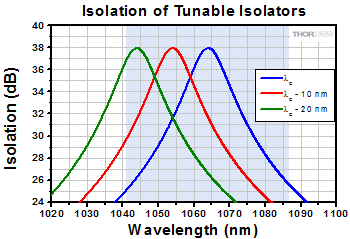
Click to Enlarge
Our Adjustable Narrowband Isolators can be tuned to maximize the peak isolation for any wavelength within a narrow spectral range (shaded in this graph). See the Wavelength Tuning tab for more details. This plot shows data for the IO-3-1064-HP. Graphs showing the isolation and transmission for each isolator tuned to the center wavelength are provided on the Graphs tab.
Custom Isolators
- Customizable Wavelength, Aperture, Max Power, Housing, Polarizers, and Operating Temperature
- Pricing Similar to Stock Units
- Wide Range of OEM Capabilities
- Please Contact Tech Support or See Our Custom Isolators Page
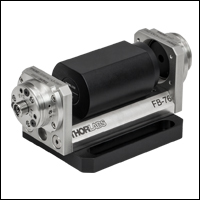
Click to Enlarge
Many of our isolators, such as the
IO-3D-1064-VLP, can be ordered in custom packages for use in FiberBench systems by contacting Tech Support.
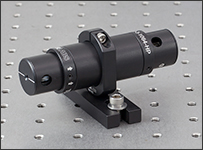
Click to Enlarge
IO-3-1064-HP Isolator Shown in Included SM1RC Saddle and Mounted to an Optical Table Using a BA1 Base and SD1 1/4"-20 to 8-32 Counterbore Adapter
Features
- Minimize Feedback into Optical Systems
- Free-Space Input and Output Ports
- Fixed or Tunable Wavelength Ranges
- Isolation at Center Wavelength from 25 to 55 dB
- Max Beam Diameter from Ø1.6 mm to Ø9 mm
- Max CW Power from 200 mW to 200 W
Thorlabs is pleased to stock a variety of free-space optical isolators designed for use with Nd:YAG lasers (i.e., output at the fundamental wavelength of 1064 nm). Optical isolators, also known as Faraday isolators, are magneto-optic devices that preferentially transmit light along a single direction, shielding upstream optics from back reflections. Back reflections can create a number of instabilities in light sources, including intensity noise, frequency shifts, mode hopping, and loss of mode lock. In addition, intense back-reflected light can permanently damage optics. Please see the Isolator Tutorial tab for an explanation of the operating principles of a Faraday isolator.
For applications at Nd:YAG wavelengths, we offer three types of isolators. The first type, Fixed Narrowband Isolators, contains fixed, factory-aligned optics, for which peak isolation and peak transmission occurs at a pre-defined center wavelength. Any deviation from this wavelength will cause a dip in isolation and transmission. The second type, Adjustable Narrowband Isolators, offers the user the ability to adjust the alignment of the input and output polarizers, allowing tuning of the center wavelength within a 45 nm range. The third type, Tandem Narrowband Isolators, consists of two Faraday rotators in series, boosting the isolation to at least 55 dB at the expense of lower transmission. Please see the Isolator Types tab for additional design details and representative graphs of the wavelength-dependent isolation.
| Selection Guide for Isolators (Click Here for Our Full Selection) |
|---|
| Wavelength Range |
| 365 - 385 nm (UV) |
| 390 - 700 nm (Visible) |
| 690 - 1080 nm (NIR) |
| 1064 nm (Nd:YAG) |
| 1110 - 2100 nm (IR) |
| 2.20 - 4.55 µm (MIR) |
| Broadband |
| Fiber Isolators |
| Custom Isolators |
The housing of each isolator shown here, except for the IO-D-1064-VLP, is marked with an arrow that indicates the direction of forward propagation. The input and output apertures of the IO-D-1064-VLP are indicated by the black and gold coloring of the cylinder, respectively. All isolators shown here (including the IO-D-1064-VLP) have engravings that indicate the alignment of the input and output polarizers.
Thorlabs also manufactures free-space and fiber-optic isolators for wavelengths from the UV to the infrared (see the Selection Guide table to the left). As indicated in the tables below and pictured to the right, many of our stock isolators can also be provided in a mount designed for our FiberBench systems. If Thorlabs does not stock an isolator suited for your application, please refer to the Custom Isolators tab for information on our build-to-order options, or contact Tech Support. Thorlabs' in-house manufacturing service has over 25 years of experience and can deliver a free-space isolator tuned to your center wavelength from 365 nm to 4.55 µm.
Blue shaded regions on a graph represent the center wavelength tuning range of the isolator (see the Wavelength Tuning tab for more information). With these isolators, the isolation and transmission curves will shift as the center wavelength shifts. If the graph is not blue shaded, then the isolator is non-tunable. Please note that these curves were made from theoretical data and that isolation and transmission will vary from unit to unit.
The IO-3-1064-VHP, IO-5-1064-VHP, and IO-10-1064-VHP are Fixed Narrowband Isolators for use at 1064 nm. For operation centered at 1053 nm, please contact us prior to ordering.
Tuning an Adjustable Narrowband Isolator
- Optimize Our Isolators to Provide the Same Peak Isolation Anywhere Within Their Tuning Range
- Simple Tuning Procedure, Illustrated Below, Consists Primarily of Rotating the Output Polarizer
- Slight Transmission Losses Occur Due to Polarizer Rotation
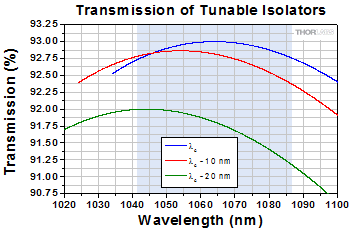
Click to Enlarge
When the isolator is tuned away from its design wavelength, the maximum transmission falls because the output polarizer's transmission axis is not parallel to the polarization direction of the output light. This plot shows transmission data for the IO-3-1064-HP. Graphs showing the transmission when each isolator is tuned to the center wavelength are provided on the Graphs tab.

Click to Enlarge
Our Adjustable Narrowband Isolators can be tuned to maximize the peak isolation for any wavelength within a narrow spectral range (shaded in this graph). This plot shows isolation data for the IO-3-1064-HP. Graphs showing the isolation when each isolator is tuned to the center wavelength are provided on the Graphs tab.
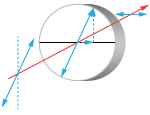
Click for Details
Light Not at the Design Wavelength is Partially Transmitted
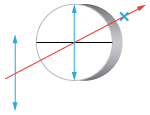 Click for Details
Click for DetailsLight at the Design Wavelength is Rejected
Operating Principles of Optical Isolators
Thorlabs' Adjustable Narrowband Isolators are designed to provide the same peak isolation anywhere within a 45 nm tuning range. They contain a Faraday rotator that has been factory tuned to rotate light of the design wavelength by 45°. Light propagating through the isolator in the backward direction is polarized at 45° by the output polarizer and is rotated by 45° by the Faraday rotator, giving a net polarization of 90° relative to the transmission axis of the input polarizer. Therefore, an isolator rejects backward propagating light. See the Isolator Tutorial tab for a schematic of the beam path.
The magnitude of the rotation caused by the Faraday rotator is wavelength dependent. This means that light with a different wavelength than the design wavelength will not be rotated at exactly 45°. For example, if 1064 nm light is rotated by 45° (that is, 1064 nm is the design wavelength), then 1054 nm light is rotated by 46.3°. If 1054 nm light is sent backward through an isolator designed for 1064 nm without any tweaking, it will have a net polarization of 45° + 46.3° = 91.3° relative to the axis of the input polarizer. The polarization component of the light parallel to the input polarizer's axis will be transmitted, and the isolation will therefore be significantly reduced.
Since the net polarization needs to be 90° to obtain high isolation, the output polarizer is rotated to compensate for the extra rotation being caused by the Faraday isolator. In our example, the new polarizer angle is 90° - 46.3° = 43.7°. This adjustment increases the isolation back to the same value as at the design wavelength.
Consequences of Wavelength Tuning Procedure
As a direct consequence of rotating the output polarizer, the maximum transmission in the forward direction decreases. 1054 nm light propagating in the forward direction is polarized at 0° by the input polarizer and rotated by 46.3° by the Faraday rotator, but the output polarizer is now at 43.7°. The amount of the transmission decrease can be quantified using Malus' Law:

Malus' Law
Here, θ is the angle between the polarization direction of the light after the Faraday rotator and the transmission axis of the polarizer, I0 is the incident intensity, and I is the transmitted intensity. For small deviations from the center wavelength, the decrease in transmission is very slight, but for larger deviations, the decrease becomes noticeable. In our example (a 10 nm difference between the design wavelength and the usage wavelength), θ = 46.3° - 43.7° = 2.6°, so I = 0.998 I0. This case is shown in the graphs above.
In applications, the decrease in transmission caused by the tuning procedure is usually less important than the significantly enhanced isolation gained by tuning. For example, if the 1064 nm isolator shown in the graphs above were used at 1044 nm without tuning, the transmission would be 92.2% (instead of 92.0%), but the isolation would be only 26 dB (instead of 42 dB). This case is also shown in the graphs above.
Thorlabs' isolator housings make it easy to rotate the output polarizer without disturbing the rest of the isolator. Our custom isolator manufacturing service (see the Custom Isolators tab) can also provide an isolator specifically designed for a particular center wavelength, which can eliminate or strongly mitigate the transmission losses that occur at the edges of the tuning range. These custom isolators are provided at the same cost as their equivalent stock counterparts. For more information, please contact Technical Support.
Illustrated Tuning Procedure
To optimize the isolation curve for a specific wavelength within the tuning range, the alignment of the output polarizer may be tweaked following the simple procedure outlined below. Only a minor adjustment is necessary to cover a range of several nanometers. The procedure differs slightly for different isolator packages, but the principle remains the same across our entire isolator family, and complete model-specific tuning instructions ship with each isolator.
Step 1:
Orient the isolator in the backward direction with respect to the beam (i.e., with the arrow pointing antiparallel to the beam propagation direction). A power meter with high sensitivity at low power levels should be placed after the isolator.
Use the included 5/64" hex key to loosen the isolator from its saddle.
Step 2:
Grip the isolator by the sides and gently bring it out of its saddle. It is only necessary to bring it out far enough to expose the 8-32 setscrew at the top, as shown in the photo to the left.
Step 3:
Use the included 5/64" hex key to tighten the isolator back into its saddle with the 8-32 setscrew exposed.
The isolator is mechanically stable in this position as long as the isolator has not been brought forward too much. (The amount shown in the image to the left is safe by several millimeters.) It should therefore not be necessary to reinsert the isolator at the end of the tuning procedure.
Step 4:
Loosen the exposed 8-32 setscrew using the included 5/64" hex key. At this point, the output polarizer will be free to rotate.
Step 5:
Rotate the output polarizer to minimize the power on the power meter. As explained above, the necessary adjustment should be only a few degrees, depending upon the desired center wavelength. Tighten the 8-32 setscrew once optimization is achieved.
As long as the isolator was not brought forward too much at the end of Step 2, the isolator will be mechanically stable in this position. Attempting to reinsert the isolator at this point may cause misalignment.
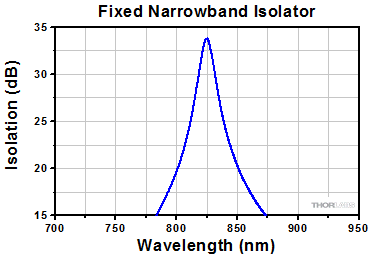
Fixed Narrowband Isolator
The isolator is set for 45° of rotation at the design wavelength. The polarizers are non-adjustable and are set to provide maximum isolation at the design wavelength. As the wavelength changes the isolation will drop; the graph shows a representative profile.
- Fixed Rotator Element, Fixed Polarizers
- Polarization Dependent
- Smallest and Least Expensive Isolator Type
- No Tuning
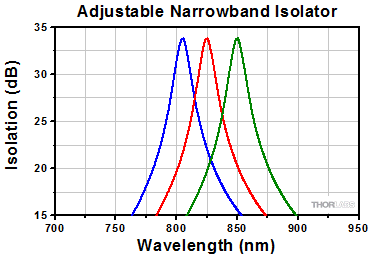
Adjustable Narrowband Isolator
The isolator is set for 45° of rotation at the design wavelength. If the usage wavelength changes, the Faraday rotation will change, thereby decreasing the isolation. To regain maximum isolation, the output polarizer can be rotated to "re-center" the isolation curve. This rotation causes transmission losses in the forward direction that increase as the difference between the usage wavelength and the design wavelength grows.
- Fixed Rotator Element, Adjustable Polarizers
- Polarization Dependent
- General-Purpose Isolator
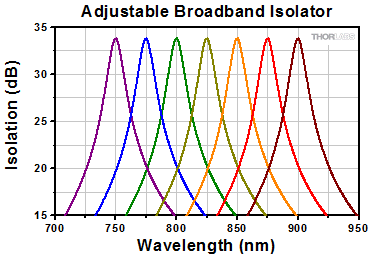
Adjustable Broadband Isolator
The isolator is set for 45° of rotation at the design wavelength. There is a tuning ring on the isolator that adjusts the amount of Faraday rotator material that is inserted into the internal magnet. As your usage wavelength changes, the Faraday rotation will change, thereby decreasing the isolation. To regain maximum isolation, the tuning ring is adjusted to produce the 45° of rotation necessary for maximum isolation.
- Adjustable Rotator Element, Fixed Polarizers
- Polarization Dependent
- Simple Tuning Procedure
- Broader Tuning Range than Adjustable Narrowband Isolators
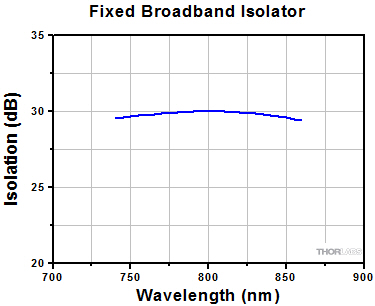
Fixed Broadband Isolator
A 45° Faraday rotator is coupled with a 45° crystal quartz rotator to produce a combined 90° rotation on the output. The wavelength dependences of the two rotator materials work together to produce a flat-top isolation profile. The isolator does not require any tuning or adjustment for operation within the designated design bandwidth.
- Fixed Rotator Element, Fixed Polarizers
- Polarization Dependent
- Largest Isolation Bandwidth
- No Tuning Required
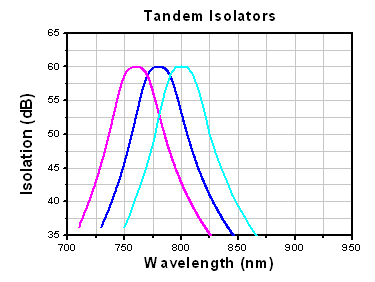
Tandem Isolators
Tandem isolators consist of two Faraday rotators in series, which share one central polarizer. Since the two rotators cancel each other, the net rotation at the output is 0°. Our tandem designs yield narrowband isolators that may be fixed or adjustable.
- Up to 60 dB Isolation
- Polarization Dependent
- Highest Isolation
- Fixed or Adjustable
Polarizer Types, Sizes, and Power Limits
Thorlabs designs and manufactures several types of polarizers that are used across our family of optical isolators. Their design characteristics are detailed below. The part number of given isolator has an identifier for the type of polarizer that isolator contains. For more details on how the part number describes each isolator, see the given isolator's manual.
Video Insight: How to Align an Optical Isolator
To ensure optimal transmission of optical power from the source, as well as effective suppression of reflections traveling back towards the source, the Faraday isolator must be properly aligned. Alignment is demonstrated using an IO-3-532-LP polarization-dependent free-space isolator with a 510 nm to 550 nm operating range, an R2T post collar, a PL201 linearly polarized and collimated 520 nm laser, a S120C silicon power sensor, and a PM400 power meter.
If you would like more information about tips, tricks, and other methods we often use in the lab, we recommend our other Video Insights. In addition, our webinars provide practical and theoretical introductions to our different products.
Optical Isolator Tutorial
Function
An optical isolator is a passive magneto-optic device that only allows light to travel in one direction. Isolators are used to protect a source from back reflections or signals that may occur after the isolator. Back reflections can damage a laser source or cause it to mode hop, amplitude modulate, or frequency shift. In high-power applications, back reflections can cause instabilities and power spikes.
An isolator's function is based on the Faraday Effect. In 1842, Michael Faraday discovered that the plane of polarized light rotates while transmitting through glass (or other materials) that is exposed to a magnetic field. The direction of rotation is dependent on the direction of the magnetic field and not on the direction of light propagation; thus, the rotation is non-reciprocal. The amount of rotation β equals V x B x d, where V, B, and d are as defined below.
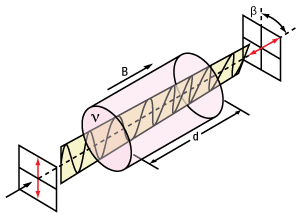
Click to Enlarge
Figure 1. Faraday Rotator's Effect on Linearly Polarized Light
Faraday Rotation
β = V x B x d
V: the Verdet Constant, a property of the optical material, in radians/T • m.
B: the magnetic flux density in teslas.
d: the path length through the optical material in meters.
An optical isolator consists of an input polarizer, a Faraday rotator with magnet, and an output polarizer. The input polarizer works as a filter to allow only linearly polarized light into the Faraday rotator. The Faraday element rotates the input light's polarization by 45°, after which it exits through another linear polarizer. The output light is now rotated by 45° with respect to the input signal. In the reverse direction, the Faraday rotator continues to rotate the light's polarization in the same direction that it did in the forward direction so that the polarization of the light is now rotated 90° with respect to the input signal. This light's polarization is now perpendicular to the transmission axis of the input polarizer, and as a result, the energy is either reflected or absorbed depending on the type of polarizer.
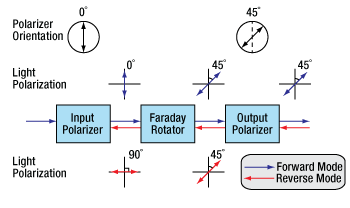
Click to Enlarge
Figure 2. A single-stage, polarization-dependent isolator. Light propagating in the reverse direction is rejected by the input polarizer.
Polarization-Dependent Isolators
The Forward Mode
In this example, we will assume that the input polarizer's axis is vertical (0° in Figure 2). Laser light, either polarized or unpolarized, enters the input polarizer and becomes vertically polarized. The Faraday rotator will rotate the plane of polarization (POP) by 45° in the positive direction. Finally, the light exits through the output polarizer which has its axis at 45°. Therefore, the light leaves the isolator with a POP of 45°.
In a dual-stage isolator, the light exiting the output polarizer is sent through a second Faraday rotator followed by an additional polarizer in order to achieve greater isolation than a single-stage isolator.
The Reverse Mode
Light traveling backwards through the isolator will first enter the output polarizer, which polarizes the light at 45° with respect to the input polarizer. It then passes through the Faraday rotator rod, and the POP is rotated another 45° in the positive direction. This results in a net rotation of 90° with respect to the input polarizer, and thus, the POP is now perpendicular to the transmission axis of the input polarizer. Hence, the light will either be reflected or absorbed.
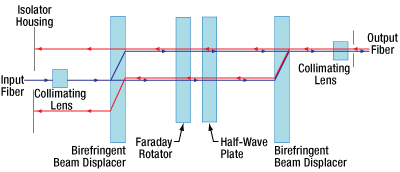 Click for Details
Click for DetailsFigure 3. A single-stage, polarization-independent isolator. Light is deflected away from the input path and stopped by the housing.
Polarization-Independent Fiber Isolators
The Forward Mode
In a polarization independent fiber isolator, the incoming light is split into two branches by a birefringent crystal (see Figure 3). A Faraday rotator and a half-wave plate rotate the polarization of each branch before they encounter a second birefringent crystal aligned to recombine the two beams.
In a dual-stage isolator, the light then travels through an additional Faraday rotator, half-wave plate, and birefringent beam displacer before reaching the output collimating lens. This achieves greater isolation than the single-stage design.
The Reverse Mode
Back-reflected light will encounter the second birefringent crystal and be split into two beams with their polarizations aligned with the forward mode light. The faraday rotator is a non-reciprocal rotator, so it will cancel out the rotation introduced by the half wave plate for the reverse mode light. When the light encounters the input birefringent beam displacer, it will be deflected away from the collimating lens and into the walls of the isolator housing, preventing the reverse mode from entering the input fiber.
General Information
Damage Threshold
With 25 years of experience and 5 U.S. patents, our isolators typically have higher transmission and isolation than other isolators, and are smaller than other units of equivalent aperture. For visible to YAG laser Isolators, Thorlabs' Faraday Rotator crystal of choice is TGG (terbium-gallium-garnet), which is unsurpassed in terms of optical quality, Verdet constant, and resistance to high laser power. Thorlabs' TGG Isolator rods have been damage tested to 22.5 J/cm2 at 1064 nm in 15 ns pulses (1.5 GW/cm2), and to 20 kW/cm2 CW. However, Thorlabs does not bear responsibility for laser power damage that is attributed to hot spots in the beam.
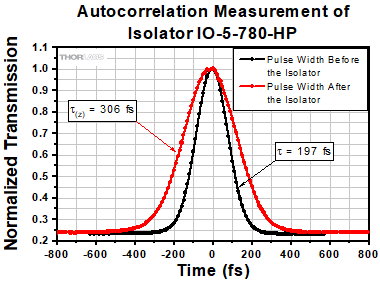
Click to Enlarge
Figure 4. Pulse Duration Measurements Before and After an IO-5-780-HP Isolator
Magnet
The magnet is a major factor in determining the size and performance of an isolator. The ultimate size of the magnet is not simply determined by magnetic field strength but is also influenced by the mechanical design. Many Thorlabs magnets are not simple one piece magnets but are complex assemblies. Thorlabs' modeling systems allow optimization of the many parameters that affect size, optical path length, total rotation, and field uniformity. Thorlabs' US Patent 4,856,878 describes one such design that is used in several of the larger aperture isolators for YAG lasers. Thorlabs emphasizes that a powerful magnetic field exists around these Isolators, and thus, steel or magnetic objects should not be brought closer than 5 cm.
Temperature
The magnets and the Faraday rotator materials both exhibit a temperature dependence. Both the magnetic field strength and the Verdet Constant decrease with increased temperature. For operation greater than ±10 °C beyond room temperature, please contact Technical Support.
Pulse Dispersion
Pulse broadening occurs anytime a pulse propagates through a material with an index of refraction greater than 1. This dispersion increases inversely with the pulse width and therefore can become significant in ultrafast lasers.
τ: Pulse Width Before Isolator
τ(z): Pulse Width After Isolator
Example:
τ = 197 fs results in τ(z) = 306 fs (pictured to the right)
τ = 120 fs results in τ(z) = 186 fs
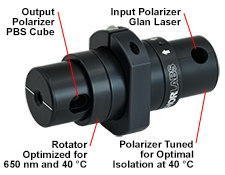
Click to Enlarge
Custom Isolator Example
Custom Adjustable Narrowband Isolator with Different Input and Output Polarizers Optimized for 650 nm Wavelength and 40 °C Temperature.
OEM Application Services
- Direct Integration to Laser Head Assemblies
- Combination Isolator and Fiber Coupling Units
- Minimum Footprint Packages
- Filter Integration
- Active Temperature Control and Monitoring
- Feedback Monitoring
- Environmental Qualification
- Private Labeling
- ITAR-Compliant Assembly
OEM and Non-Standard Isolators
In an effort to provide the best possible service to our customers, Thorlabs has made a commitment to ship our most popular free-space and fiber isolator models from stock. We currently offer same-day shipping on more than 90 isolator models. In addition to these stock models, non-stock isolators with differing aperture sizes, wavelength ranges, package sizes, and polarizers are available. In addition, we can create isolators tuned for specific operating temperatures and isolators that incorporate thermistors with heating or cooling elements for active temperature control and monitoring. These generally have the same price as a similar stock unit. If you would like a quote on a non-stock isolator, please fill out the form below and a member of our staff will be in contact with you.
Thorlabs has many years of experience working with OEM, government, and research customers, allowing us to tailor your isolator to specific design requirements. In addition to customizing our isolators (see the OEM Application Services list to the right), we also offer various application services.
| Parameter | Range |
|---|---|
| Wavelength Range | From 365 - 4550 nma |
| Aperture Sizes | Up to Ø15 mm |
| Polarization Dependence | Dependent or Independent |
| Max Powerb | Up to 2 GW/cm² |
| Isolation | Up to 60 dB (Tandem Units) |
| Operating Temperature | 10 - 70 °C |
Free-Space Isolators
We are able to provide a wide range of flexibility in manufacturing non-stock, free-space isolators. Almost any selection of specifications from our standard product line can be combined to suit a particular need. The table to the right shows the range of specifications that we can meet.
We offer isolators suitable for both narrowband and broadband applications. The size of the housing is very dependent on the desired maximum power and aperture size, so please include a note in the quote form below if you have special requirements.
Faraday Rotators
We offer Faraday rotators center wavelengths from 532 nm to 1550 nm. These are the same components used to make our isolators and rotate the polarization of incoming light by 45°. Please contact Tech Support if you require a Faraday rotator with a rotation angle or center wavelength outside of the aforementioned specifications.
| Parameter | Range |
|---|---|
| Wavelength Range | From 633 - 2050 nma |
| Polarization Dependence | Dependent or Independent |
| Max Powerb (Fiber to Free-Space) | 30 W |
| Max Powerb (Fiber to Fiber) | 20 W |
| Operating Temperature | 10 - 70 °C |
Fiber Isolators
Thorlabs is uniquely positioned to draw on experience in classical optics, fiber coupling, and isolators to provide flexible designs for a wide range of fiber optic specifications. Current design efforts are focused on increasing the Maximum power of our fiber isolators at and near the 1064 nm wavelength. We offer models with integrated ASE filters and taps. The table to the right highlights the range of specifications that we can meet.
The fiber used is often the limiting factor in determining the Maximum power the isolator can handle. We have experience working with single mode (SM) and polarization-maintaining fibers (PM); single-, double- and triple-clad fibers; and specialty fibers like 10-to-30 µm LMA fibers and PM LMA fibers. For more information about the fiber options available with our custom isolators, please see the expandable tables below.
In the spectral region below 633 nm, we recommend mounting one of our free-space isolators in a FiberBench system. A FiberBench system consists of pre-designed modules that make it easy to use free-space optical elements with a fiber optic system while maintaining excellent coupling efficiency. Upon request, we can provide select stock isolators in an optic mount with twin steel dowel pins for our FiberBench systems, as shown to the left.
We are also in the process of extending our fiber isolator capabilities down into the visible region. For more information, please contact Technical Support.
Custom Fiber Isolator
Custom Free-Space Isolator for Wavelengths Below 633 nm
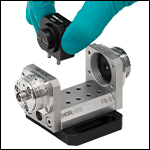
Click to Enlarge
Twin Steel Pins Insert into FiberBench
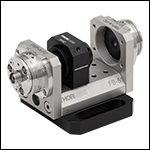
Click to Enlarge
Mounted Isolator
| Polarization Independent Fiber |
|---|
| Polarization Maintaining Fiber |
|---|
Make to Order Options
The expandable tables below provide information on some common isolator and rotator specials we have manufactured in the past. We keep the majority of the components for these custom isolators in stock to ensure quick builds, so these specials are available with an average lead time of only 2-4 weeks. Please use the Non-Stock Isolator Worksheet below for a quote.
| Adjustable Narrowband Isolators |
|---|
| Faraday Rotators |
|---|
| Fixed Narrowband Isolators |
|---|
| Fixed Broadband Isolators |
|---|
Custom Request Form
Request a custom isolator quote using the form below or by contacting us for more information at (973) 300-3000.
| Posted Comments: | |
Yosuke Minowa
(posted 2019-06-20 03:03:15.937) Can I know the refractive index of the magneto-optic material? Also, I'd like to know the size of the magneto-optic material, in particular the length of the material along the propagation direction. YLohia
(posted 2019-06-19 04:48:55.0) Hello, thank you for contacting Thorlabs. The Faraday rotator in the IO-3D-1064-VLP is made of a 12.7mm long TGG piece, which has a refractive index of 1.954 at 1064 nm. thonas.liebig
(posted 2016-09-19 16:00:36.877) What are the pulse damage threshold specifications for the VLP designated isolators? Is there also a pulse energy threshold? jlow
(posted 2016-09-19 02:17:25.0) Response from Jeremy at Thorlabs: The pulsed peak power should be <300kW/cm^2 for the -VLP isolators to avoid damage. tenner
(posted 2014-12-12 16:06:59.003) Can the IO-5-1064-HO get mounted on a FB-76W? jlow
(posted 2014-12-17 10:51:47.0) Response from Jeremy at Thorlabs: The IO-5-1064-VHP does not have a standard mounting method for the FiberBench. Due to its size, the optical center would be well above the center line of the end brackets on the FiberBench. We can make a high power version which can be fitted onto the FiberBench. We will contact you directly about this. jdi000001ster
(posted 2014-09-09 18:31:41.133) Does it come with a holder? Is there a waveplate and/or polarizer before and/or after the Faraday rotator? jlow
(posted 2014-09-18 10:44:51.0) Response from Jeremy at Thorlabs: There are polarizers both before and after the Faraday rotator. The mount included with each isolator depends on the exact model but we have other mounts or adapters available. antti.harkonen
(posted 2014-05-07 15:28:19.363) Dear Sir/Madam,
I just wanted to ask if you have considered volume pricing for the 1064 nm mini isolator?
These components could be incorporated into a number of devices, but the standard price is very high compared to the competition competitors for example for the amount of 5 pcs.
Therefore, it would be nice if you could have lower prices for higher volume. The competitive advantage that Thorlabs has is the fast delivery time, which is nice. jlow
(posted 2014-05-07 11:31:52.0) Response from Jeremy at Thorlabs: We will contact you directly about your need and volume pricing. jjurado
(posted 2011-06-01 12:00:00.0) Response from Javier at Thorlabs to last poster: Thank you very much for contacting us. All of the optic components are rated to be able to handle this power level; however, we have not yet tested the effects of heating on the device. Please contact us at techsupport@thorlabs.com to further discuss your application. user
(posted 2011-05-31 15:46:00.0) Do you guarantee all the specifications of IO-10-1064-VHP if we use it with 200W CW laser at room temp? We are concerned that the 200W laser makes the isolator heat-up, and the specified parameters (isolation) are not achievable... jjurado
(posted 2011-03-10 11:24:00.0) Response from Javier at Thorlabs to Rolando Espindola: Thank you for submitting your inquiry. Below are the damage threshold specifications for our freespace isolators:
For the VHP versions, the spec is 20 kilowatts/cm^2 CW and 1 GW/cm^2 pulsed.
For the HP the spec is 500Watts/cm^2 CW and 150 MW/cm^2 pulsed.
For the LP the spec is 100Watts/cm^2 CW and 25 MW/cm^2 pulsed.
These power specifications apply to all isolators that have the VHP or HP or LP polarizer designations. rolando.espindola
(posted 2011-03-08 19:09:19.0) What is the damage threshold for use with a pulsed laser?
160 uJ energy, 1 ns pulse width. |
The following selection guide contains all of Thorlabs' Free-Space Optical Isolators. Click the colored bars below to to see specifications and options for each wavelength range and isolator type. Please note that Thorlabs also offers fiber optical isolators and custom optical isolators.
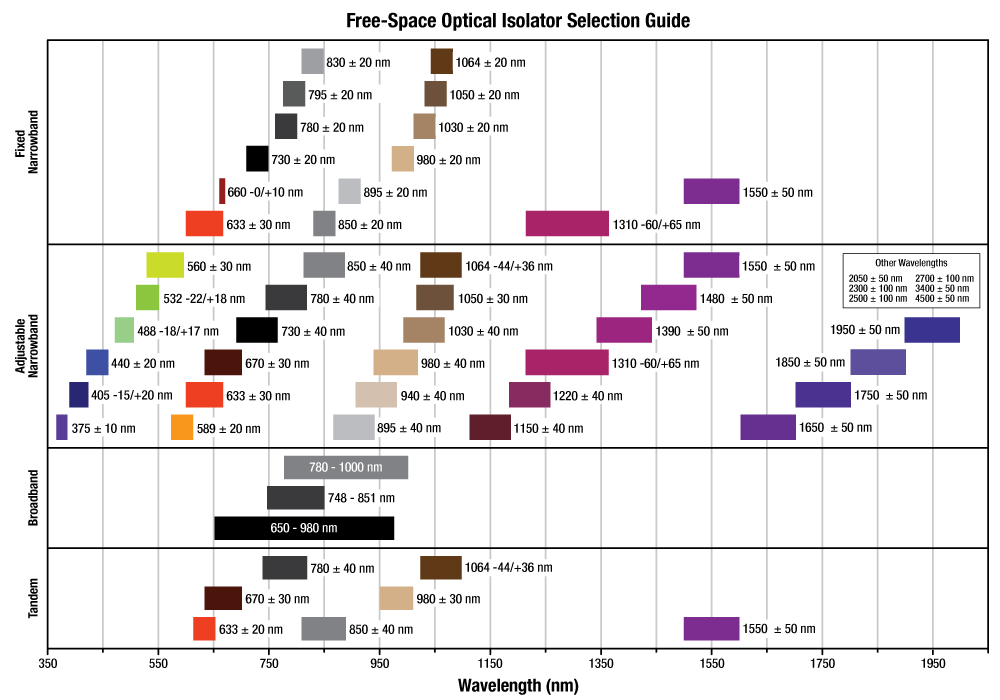

| Click Image for Details | 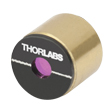 |
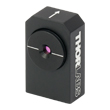 |
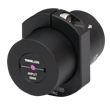 |
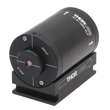 |
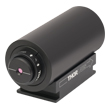 |
| Item # | IO-D-1064-VLPa,b | IO-2.5-1064-VLPb,c | IO-3D-1064-VLPb | IO-5-1064-VLPd | IOT-5-1064-VLPd |
| Type | Fixed Narrowband | Fixed Narrowband | Fixed Narrowband | Adjustable Narrowband | Tandem Adjustable Narrowband |
| Center Wavelength | 1064 nm | 1064 nm | 1064 nm | 1064 nm | 1064 nm |
| Tuning Range | N/A | N/A | N/A | 1042 - 1087 nm | 1042 - 1087 nm |
| Operating Range | 1058 - 1084 nm | 1058 - 1084 nm | 1044 - 1084 nm | 1020 - 1100 nm | 1020 - 1100 nm |
| Transmission | 75% | 75% | 92% | 92% | 85% |
| Isolation | 36 dB (Min) 40 dB (Typ.) |
34 dB (Min) 40 dB (Typ.) |
38 dB (Min) 44 dB (Typ.) |
35 dB (Min) | 55 dB (Min) |
| Performance Graph (Click for Details) |
|||||
| Max Beam Diametere | 1.6 mm | 2.3 mm | 2.7 mm | 4.7 mm | 4.7 mm |
| Max Powerf | 200 mW | 300 mW | 700 mW | 1.7 W | 1.7 W |
| Max Power Density | 10 W/cm2 | 10 W/cm2 | Blocking:g 25 W/cm2 Transmission:g 100 W/cm2 |
Blocking:g 25 W/cm2 Transmission:g 100 W/cm2 |
Blocking:g 25 W/cm2 Transmission:g 100 W/cm2 |
| Compatible Mounting Adaptersh |
N/A | CP36 SM1RCi (SM1RC/M) SM1TC SM2A21 |
SM3B2 C2RC (C2RC/M) |
||

| Click Image for Details | 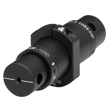 |
 |
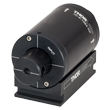 |
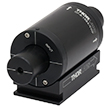 |
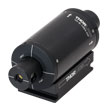 |
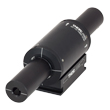 |
| Item # | IO-3-1064-HPa | IO-3-1064-VHPa | IO-5-1064-HPb | IO-5-1064-VHPb | IO-8-1064-HPb | IO-10-1064-VHPb |
| Type | Adjustable Narrowband | Fixed Narrowband | Adjustable Narrowband | Fixed Narrowband | Adjustable Narrowband | Fixed Narrowband |
| Center Wavelength | 1064 nm | 1064 nm | 1064 nm | 1064 nm | 1064 nm | 1064 nm |
| Tuning Range | 1042 - 1087 nm | N/A | 1042 - 1087 nm | N/A | 1042 - 1087 nm | N/A |
| Operating Range | 1020 - 1100 nm | 1059 - 1069 nmc | 1020 - 1100 nm | 1059 - 1069 nmc | 1020 - 1100 nm | 1059 - 1069 nmc |
| Transmission | 93% | 91% | 93% | 91% | 90% | 92% |
| Isolation | 38 dB (Min) 44 dB (Typ.) |
35 dB (Min) 44 dB (Typ.) |
38 dB (Min) 44 dB (Typ.) |
35 dB (Min) 44 dB (Typ.) |
35 dB (Min) 44 dB (Typ.) |
33 dB (Min) 40 dB (Typ.) |
| Performance Graph (Click for Details) |
||||||
| Max Beam Diameterd | 2.7 mm | 2.7 mm | 4.7 mm | 4.7 mm | 7 mm | 9 mm |
| Max Powere | 15 W | 30 W | 60 W | 100 W | 75 W | 200 W |
| Max Power Density | 500 W/cm2 | 20 kW/cm2 | 500 W/cm2 | 20 kW/cm2 | 500 W/cm2 | 20 kW/cm2 |
| Compatible Mounting Adaptersf |
CP36 SM1RCg (SM1RC/M) SM1TC SM2A21 |
SM3B2 C2RC (C2RC/M) |
||||

These adapters provide mechanical compatibility between our isolator bodies and SM1 (1.035"-40) lens tubes, SM2 (2.035"-40) lens tubes, SM3 (3.035"-40) lens tubes, 30 mm cage systems, Ø1/2" posts, Ø1" posts, and our FiberBench systems.
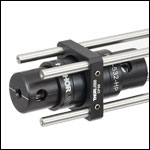
Click for Details
IO-5-532-HP Mounted in CP36 30 mm Cage Plate
The SM3B2 will be retired without replacement when stock is depleted. If you require this part for line production, please contact our OEM Team.
 Products Home
Products Home












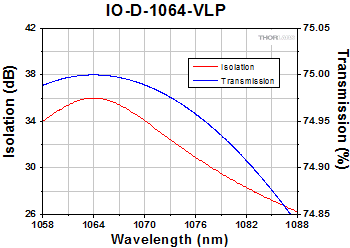
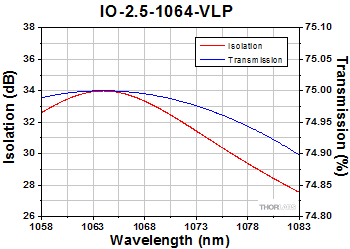
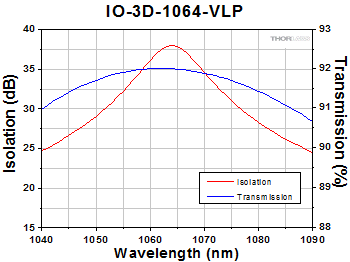
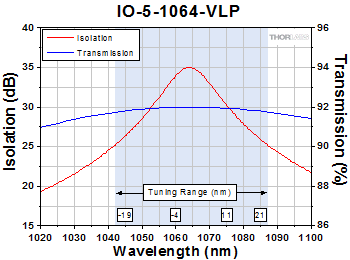
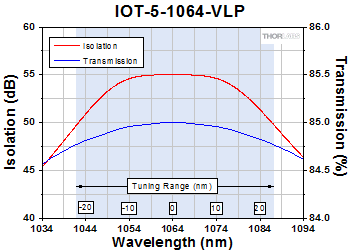
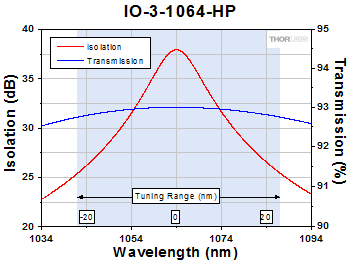
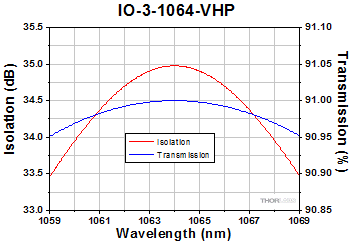
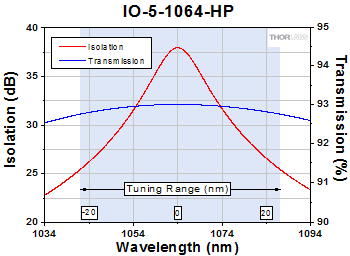
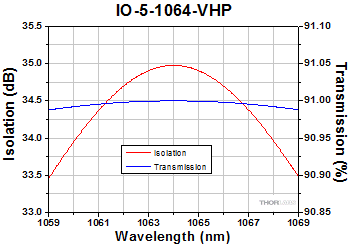
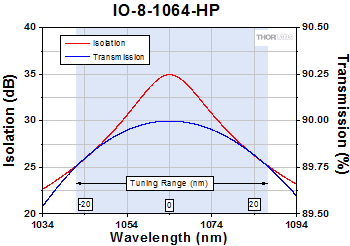
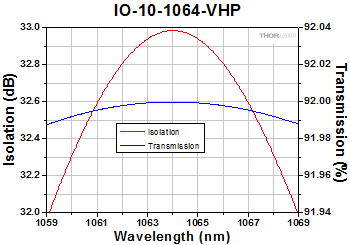
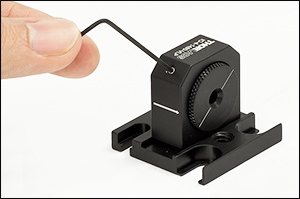
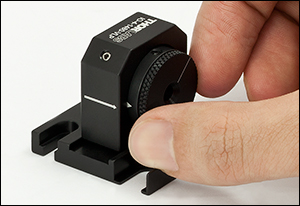
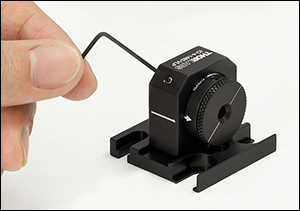
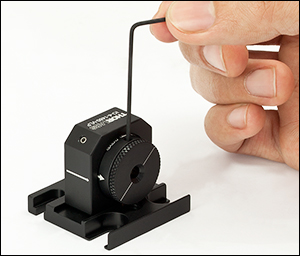
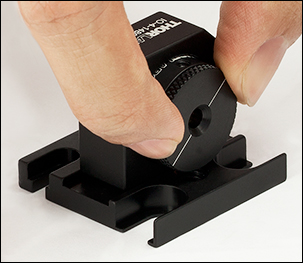
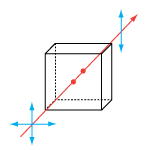
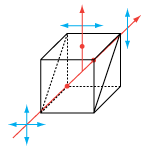
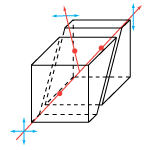
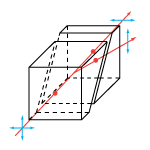
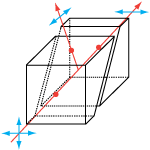
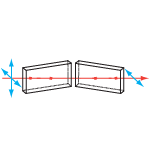
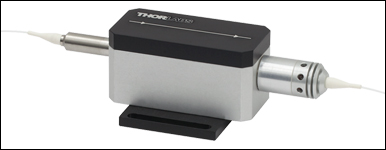






 Nd:YAG Free-Space Isolators
Nd:YAG Free-Space Isolators